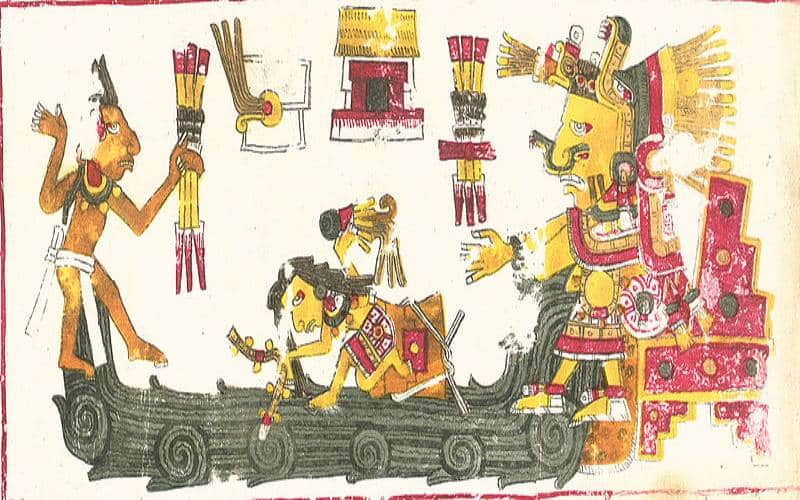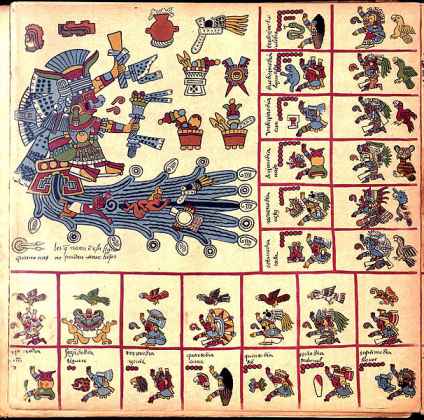Water was so important for ancient civilizations that they prayed to gods and goddesses ruling over bodies of water. Among the large number of Aztec gods and goddesses, Chalchiuhtlicue was the goddess of freshwater.
If you ask different people about what they consider necessary in their lives, you will get quite different answers. However, one thing we can all agree on: without water, there would be no life. That’s why the first human settlements were built around large rivers and other freshwater sources.
Since Aztecs inhabited the territory of today’s Mexico (which is quite an arid area), that little water that they had, Aztecs valued as liquid gold. Chalchiuhtlicue was more than a goddess for Aztecs; for them, she made the difference between life and death.
Origins
Written mentions of Chalchiuhtlicue can be found in Codex Borgia, a Precolumbian Mesoamerican pictorial manuscript, also known as Codex Yohualli Ehecatl. This manuscript contains calendars and religious and ritual contents.
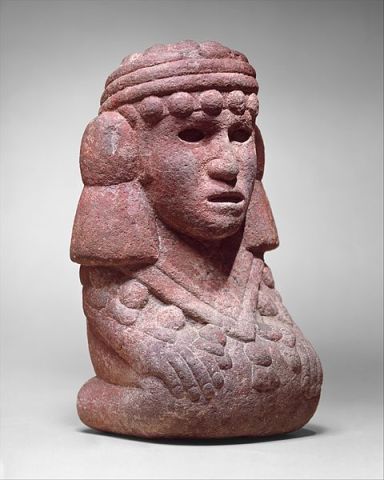
Since it contains information about many gods of Central America, Codex Borgia is a good source on Chalchiuhtlicue, as it depicts an image of her. Chalchiuhtlicue was also mentioned and depicted in several other manuscripts, including Codex Borbonicus, Codex Ríos, and the Florentine Codex.
In one version of her story, Chalchiuhtlicue was a sister-wife of Tlaloc, the Aztec god of rain. Both deities were closely related to water, and they couldn’t exist without each other. Chalchiuhtlicue helped her husband rule the paradisal kingdom of Tlalocan.
Tlalocan was reserved as a place of eternal rest for people who died of drowning and other water-related deaths. Chalchiuitlicue and Tlaloc had a son, Tēcciztēcatl, who ruled over the moon and moonlight. In another version, Chalchiuhtlicue was married to Xiuhtecuhtli, the Aztec god of fire, day, and heat.
Depiction
Chalchiuhtlicue’s name basically means “She of the Jade Skirt,” and this goddess is also known as Chalchiuhtlatonac, which means “She who shines like jade,” and as Matlalcueye, which means “Possessor of the Blue Skirt.”
Apart from wearing her blue/jade skirt, Chalchiuhtlicue is depicted wearing a blue-and-white headdress and a shawl. She is often depicted as being close to bodies of water or even with water flowing out of her.
When represented through sculpture, Chalchiuhtlicue is sculpted out of green stone, in accordance with her name.
Two Pyramids
Teotihuacán was a place of dominant political power from 200-600 AD, a few centuries before the rise of the Aztec Empire. However, in this place, a large structure called The Pyramid of the Moon was built along The Pyramid of the Sun.
It is believed that The Pyramid of the Moon was built in Chalchiuhtlicue’s honor, which was further proved when a group of archaeologists unearthed a 20-ton monolithic sculpture underneath the pyramid. The sculpture depicted a great goddess of water, which was believed to be Chalchiuhtlicue.
The sculpture’s features clearly point out that this was indeed a place to worship Chalchiuhtlicue. Another pyramid is believed to be dedicated to Chalchiuhtlicue’s husband, but it is uncertain if that is Tlaloc or Xiuhtecuhtli.
In either case, these pyramids are solid proof that Aztec gods and goddesses predate the Aztec Empire and that they were worshipped for many centuries before.
Five Suns Creation Myth
According to Aztec mythology, the present world is actually the fifth cycle of creation and subsequent destruction. Before our worlds, there were four other worlds that gods created and then destroyed for some reason. These worlds were called Suns, and right now, we are living on the Fifth Sun.
The previous world, the Fourth Sun, was ruled by Chalchiuhtlicue, and everything went well until Chalchiuhtlicue felt mistreated by her husband, Tlaloc. As a retaliation, Chalchiuhtlicue released 52 years of rain upon the world, causing the massive flood that destroyed the Fourth Sun.
Still, as a sign of her goodwill, Chalchiuhtlicue helped those that worshipped her. Chalchiuhtlicue built a bridge between the earth and the heaven, and those who were in her good graces could cross it and save their souls. Others were turned into fish.
Out of the drowned Fourth Sun, our world, the Fifth Sun, emerged. As a way of helping them, Chalchiuhtlicue taught the Aztecs to grow maize, a crop that became a staple food for Mesoamerica and for the whole world a few centuries later.
Chalchiuhtlicue was a giver of life, but she could also destroy it without flinching.
Chalchiuhtlicue, Huixtocihuatl, and Chicomecoatl
However Chalchiuhtlicue wasn’t the only Aztec goddess related to water; there was also Huixtocihuatl, a goddess ruling over the salt waters. However, both goddesses had important yet distinct roles for the Aztec people.
Both Chalchiuhtlicue and Huixtocihuatl were not only the goddesses of water, but they were also goddesses of fertility. It makes no wonder, as the water was always connected to the fertility of the soil.
While the proximity of freshwater streams enriches the soil with precious organic matter, seas and oceans are full of fish and other animals that are valuable food sources. Additionally, salt from the seas and oceans became a staple in human nutrition.
According to the legend, Chalchiuhtlicue and Huixtocihuatl were sisters, and they had a third sister, Chicomecoatl. Chicomecoatl was the goddess of agriculture, and the three sisters provided humans with three essentials: salt, food, and water.
A Fertility Goddess
Aztecs had several gods and goddesses of fertility, and Chalchiuhtlicue was one of them. Along with her husband and/or brother Tlaloc, Chalchiuhtlicue could provide her worshippers with abundance and good harvest, but she could also withhold water and rain or send them in excess amounts.
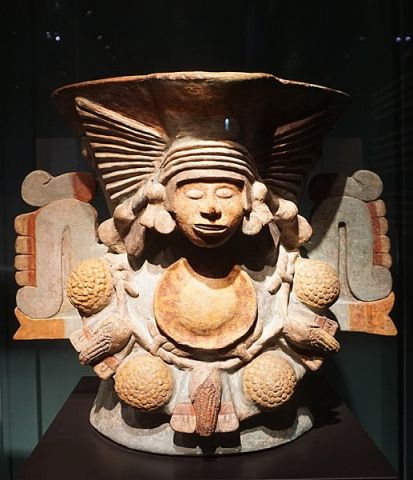
As such, Chalchiuhtlicue also represented fertility regarding conceiving and childbirth. As such, she protected newborn children from illnesses. Local priests and healers often practiced hydromancy, a form of healing that included water.
Also, since childbirth mortality was also high for women, Chalchiuhtlicue was often invoked to protect both the mother and the child. The whole process included several rituals aimed at appeasing Chalchiuhtlicue.
When the umbilical cord was cut, the midwives bathed the newborn while saying the customary greetings and prayers to Chalchiuhtlicue. After four days, the infant has been washed again and named, all done while praying to Chalchiuhtlicue and other gods.
It was believed that Chalchiuhtlicue ruled over the amniotic fluid, water that flowed when the child was born. Also, if the child died before it turned one year, it was welcomed in Chalchiuhtlicue’s domain of the afterlife.
Chalchiuhtlicue Vs. Tlazōlteōtl
Due to her role in childbirth, Chalchiuhtlicue is often confused with another goddess, Tlazōlteōtl. The two goddesses sometimes have similar, even overlapping roles, but they are two different deities.
Tlazōlteōtl is the goddess of steam baths, purification, and midwives, which associates her with Chalchiuhtlicue. However, she was also the protector of vice, adulterers, lust, and filth. As much as she would instigate sin, she also brought the punishment for it.
On the other hand, Chalchiuhtlicue didn’t punish people for their sins, and she only punished them when she felt unappreciated. After all, she was capable of drowning the whole world just because she was neglected by her husband!
Chalchiuhtlicue Rituals
If the significance of Chalchiuhtlicue in the Aztec culture is still unclear to you, let me tell you one interesting fact. Out of 20 big celebrations in the Aztec calendar, five were dedicated to Chalchiuhtlicue and her brother and/or husband, Tlaloc.
This fact alone shows how important these two deities were to the Aztecs. There were many rituals and celebrations carried out in their honor. In one such celebration, the priests would walk into the water and imitate the movements and croaking of the frogs. This was done in order to invoke rain.
These celebrations would last throughout the whole of February, but Chalchiuhtlicue was also celebrated during other days in the year. According to some historians, Aztecs would sacrifice a 6-7-year-old child to Chalchiuhtlicue once a year to appease her and make sure she provided a good year.
These annual sacrifices took place at lake Texcoco, and they coincided with sacrifices to Tlaloc. Nowadays, Texcoco is mostly drained, and it is far from its former glory.
Chalchiuhtlicue and Christianity
During the Spanish conquest, many Aztec and other Mesoamerican deities were assimilated and syncretized with the Christian saints. That made the transition from the native religions to Christianity much easier and allowed the natives to retain parts of their cultural identities and traditions.
However, not every deity got syncretized, no matter how important they were. This was the case with Chalchiuhtlicue. As a goddess associated with fertility and childbirth, Chalchiuhtlicue could have been syncretized with Holy Mary.
It was probably her volatile nature that prevented Chalchiuhtlicue from becoming syncretized with Christian saints. After all, can you imagine Holy Mary destroying the whole world in a fit of anger? The answer is obvious…
Modern Culture
Still, that didn’t decrease Chalchiuhtlicue’s importance at all. Her cult continued to live on, and traces of her worship are still present today. In modern Mexico, there is a legend of La Llorona, the Weeping Woman.
La Llorona haunts the Rio Grande, where she can easily drown you if you are careless enough. It is said that she rules over the part of the afterlife reserved for people that died by drowning or other water-related death. This is quite similar to Chalchiuhtlicue’s rule over Tlalocan.
La Llorona is associated with rain, weeping, drowning, and water in general. Her character is often described as maternal, even though she is said to have drowned her children. This is another parallel to Chalchiuhtlicue, who drowned her worshippers and the whole world.
Legacy
Apart from echoes of Chalchiuhtlicue being present in the modern beliefs and urban legends of Mexico, Chalchiuhtlicue had an influence on its culture too. For example, in one of her self-portraits, Frida Kahlo wore a necklace with glyphs of Chalchiuhtlicue and Tlaloc.
Chalchiuhtlicue also appeared in several popular TV shows and comic books, such as Stargate SG-1, The Invisibles, and many others. A skincare cosmetics factory H20 Plus is adorned with large panels depicting several deities, including Chalchiuhtlicue, as an hommage for her role in the creation of life.
Apart from her part in pop culture, Chalchiuhtlicue can teach us so many lessons today. The most obvious and trivial one is that water, although necessary for our lives, can also quickly become a destructive force.
There are also more subtle and complex lessons that Chalchiuhtlicue teaches us. Mother figures in our lives are crucial for our development, but they can also be smothering and destroy our lives. What creates life can easily destroy it.
Environmental Message
Still, the strongest message the Chalchiuhtlicue sends us is the importance of water. No matter how trivial that sounded, as long as humanity exists, it will rely on freshwater sources.
However, our civilization is slowly destroying the whole planet, including our freshwater sources. More and more freshwaters are being polluted, and instead of drinking water directly from its source, we rely on bottled water pushed upon us by soulless corporations.
The day in which water becomes a luxury and commodity instead of a basic human right will mark the beginning of our end. Instead of enjoying Chalchiuhtlicue’s gifts, we will feel her wrath and anger. Perhaps, the Sixth Sun will avoid our mistakes…
Chalchiuhtlicue Symbols
Chalchiuhtlicue, as a goddess of water and fertility, can give life of abundance but can also bring destruction and famine. As long as she feels respected and worshipped enough, she will be a generous provider. Just one mistake, and she will turn into a vengeful force of destruction.
Symbols that represent water, fertility, and life are closely connected to Chalchiuhtlicue. Using any of these symbols will be a great representation of Chalchiuhtlicue and everything that she encompasses.
General
Rivers, lakes, waterfalls, and freshwater streams are the main symbols of Chalchiuhtlicue. After all, she is the goddess that rules over them. Her other symbols are tears, crying, children, childbirth, and midwives.
Animals
Just like with other Aztec water deities, Chalchiuhtlicue is represented by snakes. Snakes are wise and fertile, and they represent a life force. However, snakes are also notorious for being unpredictable and dangerous, all characteristics that can be assigned to Chalchiuhtlicue.
Other animals that symbolize Chalchiuhtlicue are rabbits and hares, fish, sea turtles, seashells, frogs, and water snakes.
Plants
Seaweeds, willows, reeds, and other plants that grow near or inside the water can be considered symbols of Chalchiuhtlicue. However, plants that are symbols of fertility and abundance, such as sunflower or poppy, can also represent Chalchiuhtlicue as she was the goddess of fertility too.
Maize is another good plant symbol of Chalchiuhtlicue because she was the one who introduced this valuable crop to the Aztecs.
Perfumes/Scents
Ylang-ylang, bergamot, mandarins, floral, and marine notes are all scents that can be used to capture the essence of Chalchiuhtlicue. The pure, clean water itself has no scent, but Chalchiuhtlicue as the goddess of fertility, can still be symbolized by various scent notes.
Gems and Metals
If we had to choose one gem or metal that would represent Chalchiuhtlicue, that would certainly be jade. After all, her name originated from the Nahuatl word for jade. Additionally, Chalchiuhtlicue was often depicted wearing a jade skirt, so it makes no wonder that jade is her gem.
Other gems and crystals that can be used to symbolize Chalchiuhtlicue are sapphires, aquamarines, diamonds, pearls, emeralds, lapis lazuli, topaz, azurite, and turquoise.
Colors
Green and blue are definitely Chalchiuhtlicue’s colors. Those are the colors that are most often associated with water, lakes, rivers, oceans, and seas. Chalchiuhtlicue’s other colors are white and silver, but she could also be represented with red, the color that symbolizes fertility.
Jewelry
Are you looking for more convenient ways to connect to Chalchiuhtlicue? Why don’t you do it through some crystal jewelry? Here you can find some cool pieces that will help you connect to Chalchiuhtlicue on a deeper level by wearing crystals associated with her.
You can find excellent jewelry pieces with gemstones that symbolize this goddess. These pieces will enable you to carry this goddess close to you no matter where you go.
Meditations To Invoke The Goddess Chalchiuhtlicue
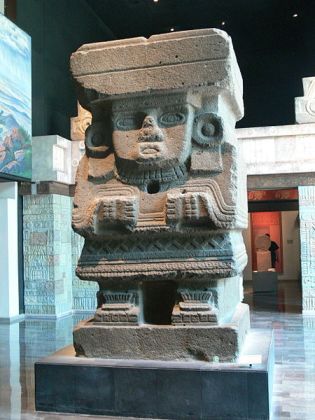
- Chalchiuhtlicue, I invoke you to help me through my pregnancy and childbirth and to protect my unborn child and me.
- Help me conceive, oh goddess of fertility, and grant me the abundance and many children.
- Clean my body and clear my mind so that I can stand pure before you, powerful Chalchiuhtlicue.
- Don’t be quick to anger and instead forgive my mistakes, as they were done out of ignorance, not on purpose.
- Make me as strong as water and capable of adapting to new situations while I slowly carve out my own path.
- Chalchiuhtlicue, help me cry tears that will purify my soul and wash out my sorrows.
- Don’t let me drown in the strong currents of life, and instead, teach me how to swim even in the deep waters.
- Protect my beloved newborn child and keep him healthy and strong until he grows up.
- Wash away all of my negative thoughts and pour the water of hope into my mind and my soul.
- Stand behind me and protect me like a mother protects her children, as I need your help and guidance more than ever.
- Help me control my anger and fury so that I don’t destroy everything that I worked for so hard.
Want To Bring More Chalchiuhtlicue Qualities Into Your Life?
- First, take a long bath. By cleaning your body, your will also clean your mind and your soul. There is nothing relaxing and more pleasant after a long day than a long, steamy bath. If you don’t have time or patience for long baths, at least try to make the most out of your showers. Light scented candles, dim the lights and play your favorite music.
- If you don’t know how to swim, take swimming lessons. No matter how old you are, learning how to swim isn’t something you should postpone any longer. If you have a fear of water, start by spending time in shallow waters first.
- Become environmentally conscious. Try to reduce your environmental footprint as much as possible. If you have a garden, collect the rainwater and use it to water your plants instead of watering them with tap water.
- If you are pregnant, take some time out of your day to relax and meditate. Pray to the goddess Chalchiuhtlicue so that she grants you as pleasant and easy labor as it is possible.
- Once you give birth to your child, think of Chalchiuhtlicue every time you bathe it. Be grateful for her gift of fertility and pray to her so that your child grows up to be healthy and strong.
- This one might sound weird, but you can plan a cool picnic inside or near the cornfield. Bring a blanket, some food and drinks, and your partner, friend, or a family member, and enjoy a bit different yet relaxing way to spend your free time.
- Finally, show some appreciation to your parents, especially to your mother. After all, she carried you for nine months, then took care of you and sacrificed everything for your happiness. The least you can do is show some gratitude!
Other Goddesses
If you enjoyed this post we are sure you will enjoy getting to know some of the other goddesses we also write about. You can find the complete list of goddesses sorted across regions and religions here.
Featured Image Credit: Wikimedia Commons

